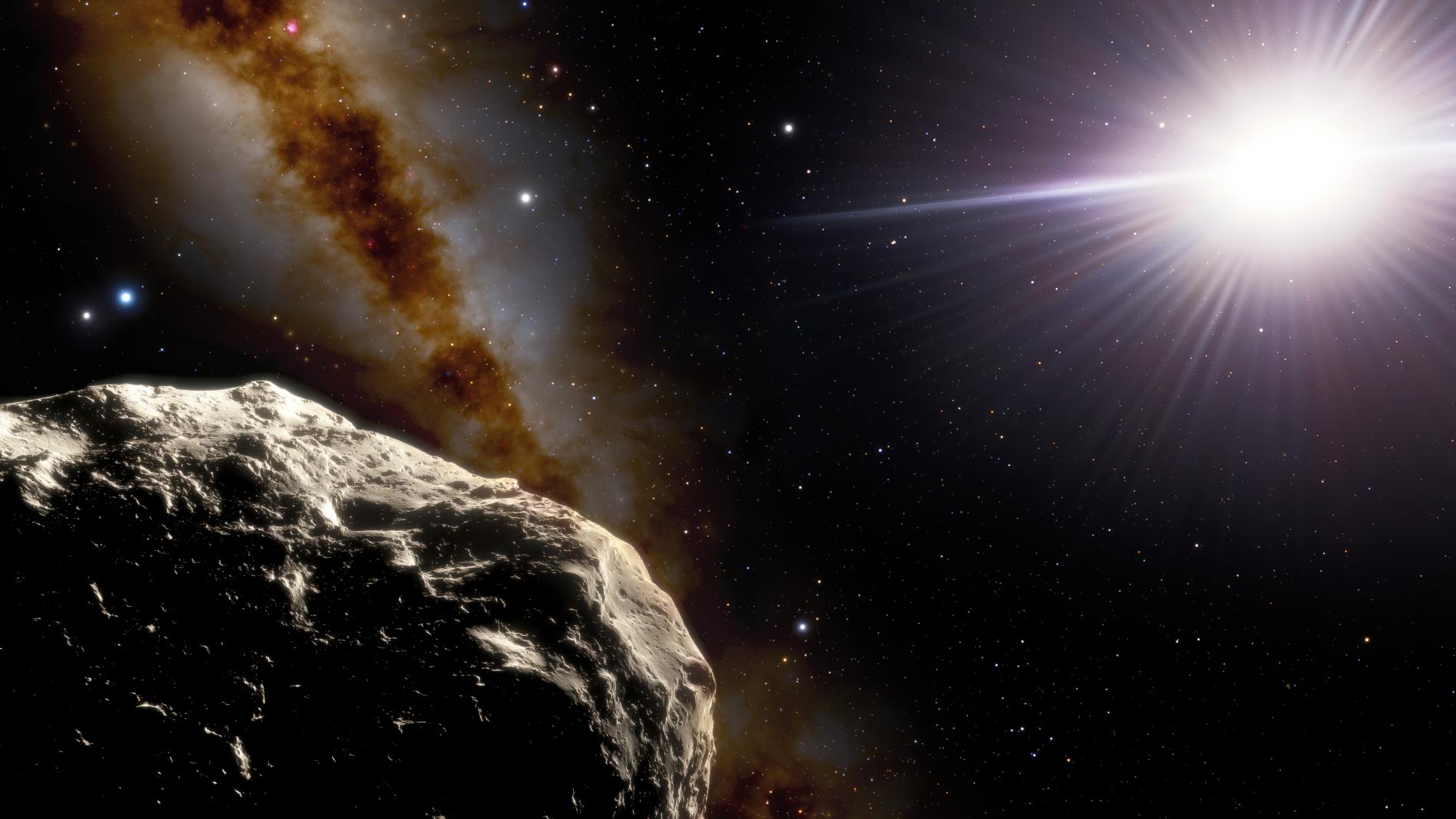Second Trojan asteroid detected around Earth
Trojans are asteroids that share an orbit with a planet around its stable Lagrangian points, which are located sixty degrees ahead and behind the planet in its orbit. Widely studied on other planets, such as Jupiter, which has several thousand, only one has so far been found around the Earth
All the smaller bodies wandering in our Solar System are subject to the gravitational influence of massive objects, such as the Sun and the planets. If we consider the various systems formed by the Sun and a planet, there are five points, the Lagrangian points, where all the forces acting on that region cancel each other out, so that they are areas of great stability. Two of these, L4 and L5, located sixty degrees ahead and behind the planet in its orbit, harbour what are known as Trojan asteroids. Now, an international scientific team with the participation of the Institute of Astrophysics of Andalusia (IAA-CSIC) has found the second Trojan asteroid around our planet.
2020 XL5, as this object has been named, is the second known terrestrial Trojan asteroid. It is estimated, from the study of its orbit, that it will remain Trojan for at least four thousand years, which defines it as transient. The science team has provided an estimate of the object's size, around one kilometre (larger than the largest known terrestrial Trojan asteroid, 2010 TK7), and has studied the thrust a rocket would need to reach the object from Earth.

Although Trojan asteroids have been known for decades on other planets such as Venus, Mars, Jupiter, Uranus and Neptune, it was only in 2011 that the first and so far only terrestrial Trojan asteroid was found. “There have been many previous attempts to find them, including in situ studies such as the search inside the L4 region by the OSIRIS-REx spacecraft (NASA), or the search inside the L5 region by the Hayabusa-2 mission (JAXA). But all the dedicated efforts had so far failed to discover any new members of this population”, says Toni Santana-Ros, researcher at the University of Alicante and the Institute of Cosmos Sciences of the University of Barcelona and lead author of the publication.
The reason for this low discovery success rate can be explained by the geometry of an object orbiting at L4 or L5 as seen from our planet. These objects are usually observable very close to the Sun, and the observing time window between the asteroid rising above the horizon and sunrise is therefore very small. This forces the telescopes to be pointed very low in the sky, where the visibility conditions are worse, and with the additional difficulty that the impending sunlight saturates the background light of the images within minutes of observation.
To solve this problem, the team searched for four-metre telescopes that could observe in these conditions, and obtained data from the 4.3-metre Lowell Discovery telescope (Arizona, USA) and the 4.1-metre SOAR telescope (Cerro Pachón, Chile). "Although the observations were very difficult, we obtained enough data to create the phase curve of the object and obtain its absolute magnitude, which provided a good estimate of the size of 2020 XL5, about one kilometre, almost three times the size of 2010 TK7", says Álvaro Álvarez-Candal, a researcher at the Institute of Astrophysics of Andalusia (IAA-CSIC) and co-author of the paper.

The discovery of terrestrial Trojan asteroids is relevant because they may constitute a pristine record of the initial conditions of the formation of the Solar System, since primitive Trojans could have orbited the planets during their formation and add constraints to the dynamical evolution of the Solar System.
In addition, terrestrial Trojans are ideal candidates for possible future space missions. Since L4 shares the same orbit as Earth, it needs a low velocity change to be reached. This implies that a spacecraft would require a very low energy budget to stay in its shared orbit with Earth while maintaining a fixed distance to it. "Earth Trojans could become bases for advanced exploration of the Solar System. The discovery of more terrestrial Trojan asteroids will improve our knowledge of the dynamics of these elusive objects and allow us to better understand the mechanics underlying their transient character", concludes Santana-Ros (Univ. Alicante / ICC-UB).
T. Santana-Ros et al. “Orbital stability analysis and photometric characterization of the second Earth Trojan asteroid 2020 XL5”, Nature Astronomy, Feb. 2022.
Instituto de Astrofísica de Andalucía (IAA-CSIC)
Unidad de Divulgación y Comunicación
Silbia López de Lacalle - sll[arroba]iaa.es - 958230676
https://www.iaa.csic.es
https://divulgacion.iaa.csic.es

